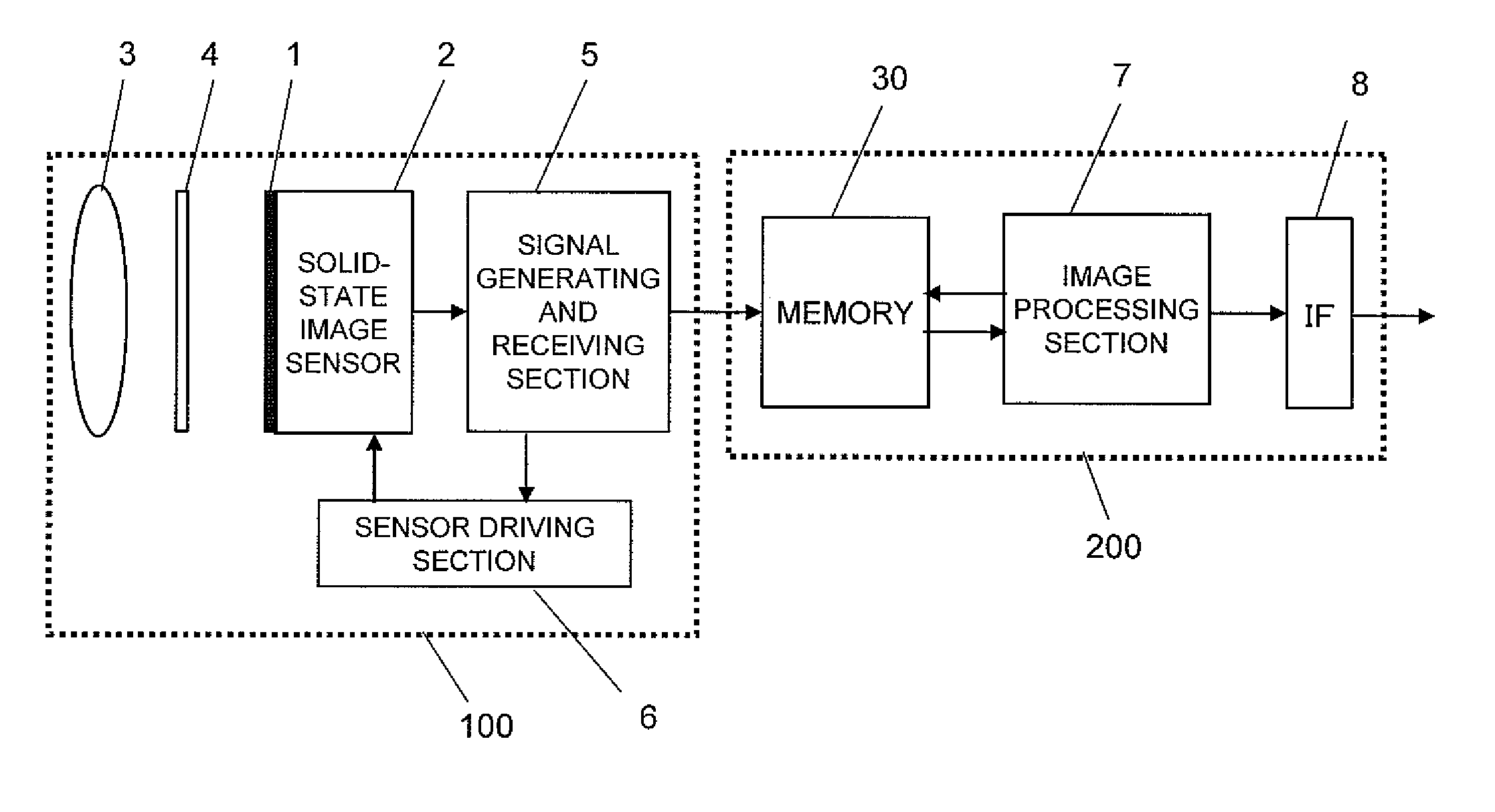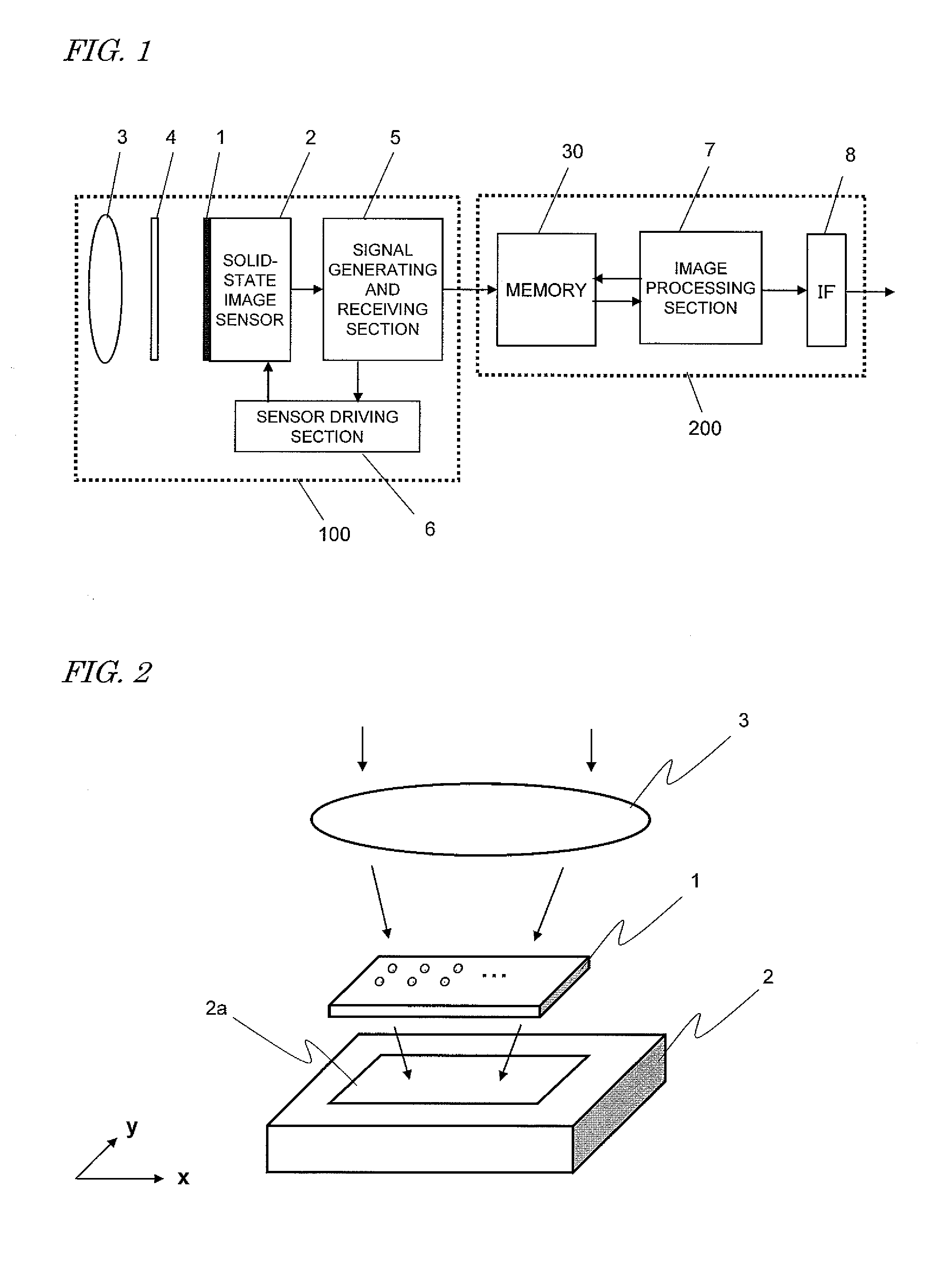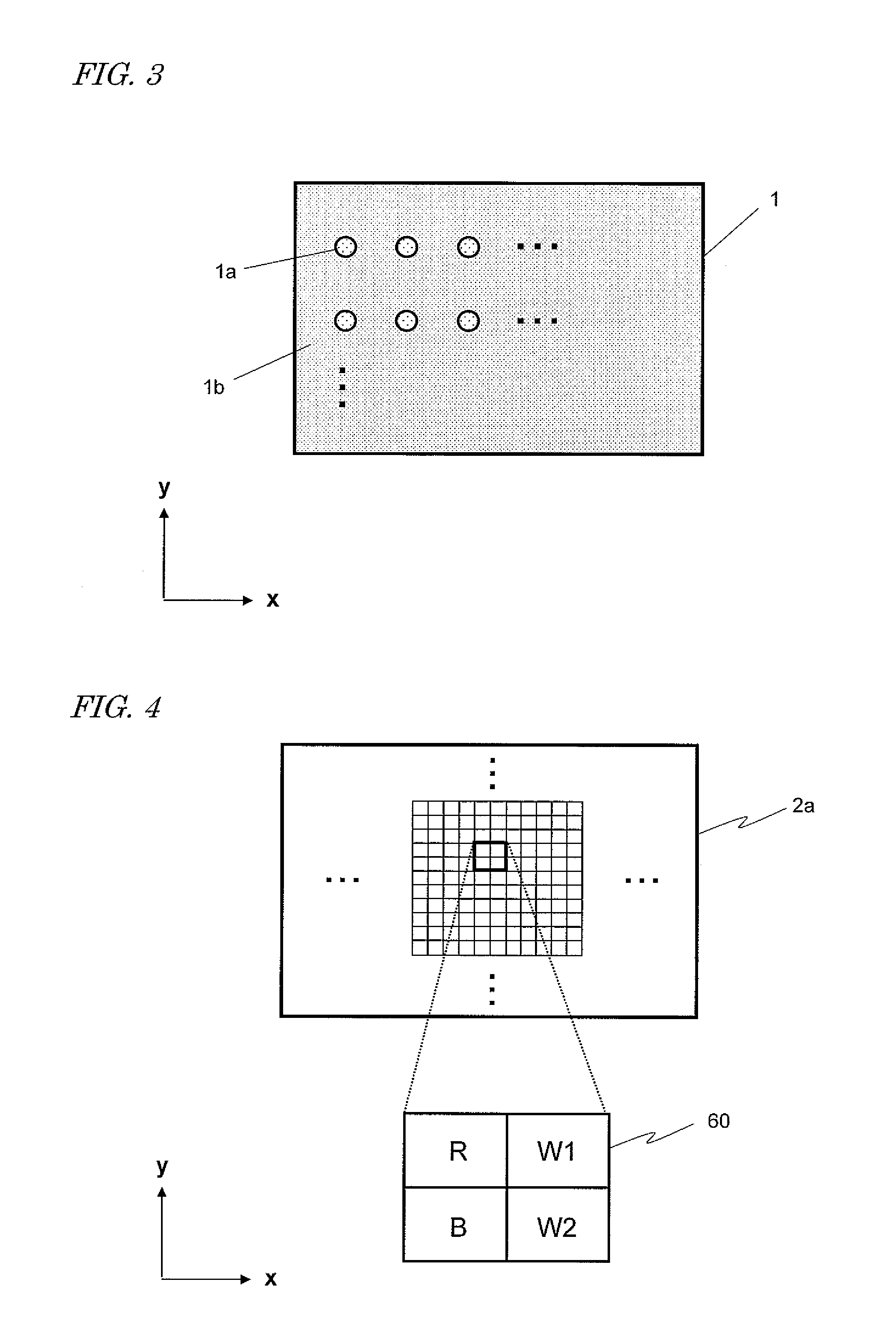Light field imaging device and image processing device
- Summary
- Abstract
- Description
- Claims
- Application Information
AI Technical Summary
Benefits of technology
Problems solved by technology
Method used
Image
Examples
embodiment 1
[0051]First of all, an image capture device as a first embodiment of the present invention will be described. FIG. 1 is a block diagram illustrating a general configuration for a light field image capture device according to this embodiment (which will be simply referred to herein as an “image capture device”). The image capture device of this embodiment is a digital electronic camera and includes an image capturing section 100 and a signal processing section 200 that generates a signal representing an image (i.e., an image signal) based on the signal generated by the image capturing section 100.
[0052]The image capturing section 100 includes a color solid-state image sensor 2 (which will be simply referred to herein as an “image sensor”) with a number of photosensitive cells that are arranged on its imaging area, a light-transmitting plate (light-transmitting section) 1 with two light-transmitting areas, which the respective transmittances have mutually different wavelength dependen...
embodiment 2
[0089]Next, a second embodiment of the present invention will be described. This second embodiment is the same as the first embodiment described above except that the optical lens 3 and the image sensor 2 of this embodiment have a different basic color scheme from that of the first embodiment. Thus, the following description of the second embodiment will be focused on that difference from the first embodiment and their common features will not be described all over again.
[0090]FIG. 7 illustrates how the incoming light is imaged by the optical lens 3 of this embodiment. In this embodiment, the optical lens 3 has different focal lengths on its peripheral portion 3a and its central portion 3b. Specifically, the lens peripheral portion 3a has a relatively short focal length and the lens central portion 3b has a relatively long focal length. With such a property taken into account, the optical lens 3, the light-transmitting plate 1 and the image sensor 2 are arranged so that the light th...
embodiment 3
[0096]Next, a third embodiment of the present invention will be described. In this embodiment, two kinds of light-transmitting members, of which the spectral transmittance characteristics are the same as those of the two kinds of light-transmitting areas of the light-transmitting plate 1, are arranged in front of the light incident surface (i.e., its front surface) of the optical lens 3 of the second embodiment. Specifically, as shown in FIG. 9, a light-transmitting member 1aa having the same spectral transmittance characteristic as the light-transmitting areas 1a of the light-transmitting plate 1 is arranged in front of the peripheral portion 3a of the lens 3, and a light-transmitting member 1bb having the same spectral transmittance characteristic as the light-transmitting area 1b of the light-transmitting plate 1 is arranged in front of the central portion 3b of the lens 3. In the other respects, the configuration and processing of this third embodiment are the same as those of t...
PUM
 Login to View More
Login to View More Abstract
Description
Claims
Application Information
 Login to View More
Login to View More - R&D
- Intellectual Property
- Life Sciences
- Materials
- Tech Scout
- Unparalleled Data Quality
- Higher Quality Content
- 60% Fewer Hallucinations
Browse by: Latest US Patents, China's latest patents, Technical Efficacy Thesaurus, Application Domain, Technology Topic, Popular Technical Reports.
© 2025 PatSnap. All rights reserved.Legal|Privacy policy|Modern Slavery Act Transparency Statement|Sitemap|About US| Contact US: help@patsnap.com



